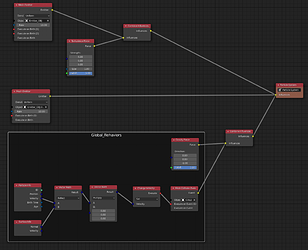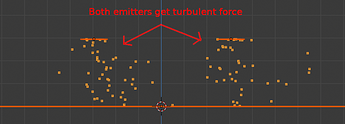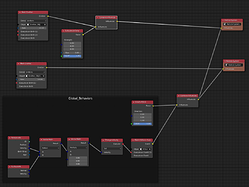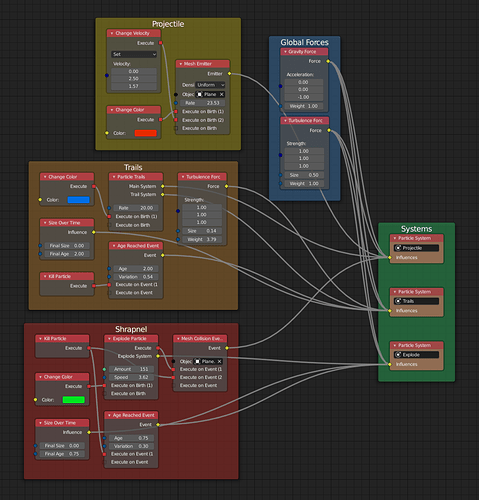@jacqueslucke , I’ve been testing some of the newest additions, they are proving really useful, awesome work!
In particular, I’m very pleased with the Combine Influences node, it really helps maintain the graph clean as setups start getting more complex.
I do, however, have a bit of a concern with respect to the user friendliness of this node, since there’s ways of using it that might seem very intuitive to new users, but are not quite correct, and can lead to a very different behavior in the simulation from what the user is expecting.
For example, in the image below, a user could have a set of global forces they want to apply to all particles, In this case a set of nodes that try to emulate collision behavior (just an example, I would assume collision response would be probably handled by the solver), but could want to apply an additional force to only one of their emitters:
They could intuitively try to use the combine influences node like in the image above, since it visually creates a separation between the different node chains in the graph.
However, as the new force that was supposed to be independent is still wired to the same particle system as all the others, all the other emitters also receive that force.
The correct way to do this would be to split the emitter that is going to receive the separate force into its own particle system:
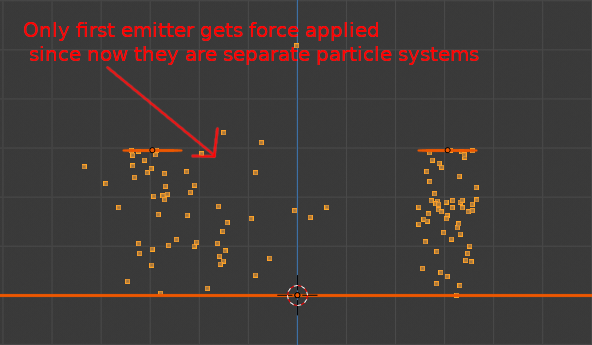
This makes sense in hindsight, and its probably something that users can pick up on quickly, but it does feel like a potential point of confusion for new users, since there’s nothing on screen that hints that it’s set up incorrectly.
Its not a solution that I actually like, since it seems less clean, but one of the only things that comes to my mind to solve this could be splitting the emitters from the behaviors, like one of the earlier UI proposals:
This makes it pretty clear that you cannot “apply” a Force to an emitter, just to a Particle System, which is not quite so evident in the current state of affairs.
I’d be happy to hear what other solutions anyone else has for this, or if you even think that this is a problem that needs to be addressed.

